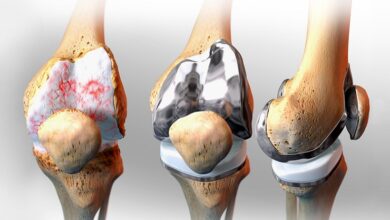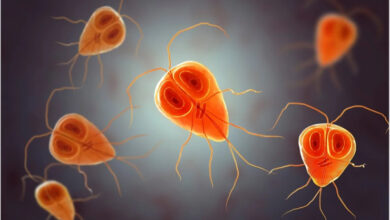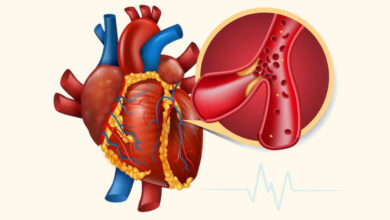
Approximately 1 to 2% of children are allergic to milk, and their immune system reacts to it. This problem occurs in itching, stomach discomfort, and tingling around the mouth. If the sensitivity is severe, it also causes Anaphylaxis. Anaphylaxis is an extreme reaction of the body to allergies that may even cause death. In the following, we will talk more about milk allergy so that you know its cause, its symptoms, and what should be done to treat it.
What is milk allergy?
The immune system of some children reacts to proteins in milk. Allergy to cow’s milk is also seen in adults, but very few and limited. This allergy is common in children, although cow’s milk is not the only cause of its occurrence. The milk of other animals, such as goats, may also cause such reactions.
Cause of milk allergy
When they consume milk for the first time, the body of people sensitive to milk produces immunoglobulin E, a type of antibody or the protector of the body’s immune system that fights certain types of allergens.
These antibodies bind to the cells of the allergen on the skin, in the respiratory tract, and in the cardiovascular system. Immunoglobulins release histamine in contact with milk proteins. This is the substance that shows the symptoms of milk allergy. This reaction occurs very quickly after digesting milk.
Sometimes, milk allergy is associated with serious risks, such as severe breathing problems and even death. Suppose your child has such a reaction to milk or food containing it. In that case, you should go to the emergency medical center immediately.
Who is allergic to milk?
Milk allergy may occur at any age; however, it is more common in children under 16. Usually, this problem disappears when children grow up. Such sensitivity may also occur in children who consume powdered milk.
There is also a possibility of sudden onset of sensitivity; some people have not been allergic to milk before and suddenly become allergic to it. Milk allergy is not contagious and cannot be passed from one person to another.
What is the way to prevent milk allergy?
There is no unique way to prevent this problem. The only way to prevent an allergic reaction is to avoid drinking milk. Before consuming any material or food product, you must ensure no milk is in its composition.
If your child is allergic to milk, discuss this with him. Teach the child not to eat milk products and discuss this issue with the school or kindergarten officials.
What are the symptoms of milk allergy?
The severity of milk allergy symptoms varies from moderate to mild. Mild to moderate symptoms of this sensitivity include:
- Skin rash (hives or eczema);
- Swelling of the lips, face, and eyes;
- Tingling around the mouth;
- Vomiting and diarrhea.
We talked about Anaphylaxis before. This severe reaction of the body may be dangerous and deadly, and its symptoms include:
- shortness of breath ;
- hoarseness;
- chest tightness;
- swelling of the tongue;
- Low blood pressure;
- Throat swelling and congestion;
- wheezing and noisy breathing;
- Loss of consciousness and lethargy of the child.
How to diagnose milk allergy?
Sometimes, symptoms appear a few minutes after drinking milk. In such a situation, it is not difficult to detect sensitivity. There are various tests to confirm this, including:
- blood test ;
- Skin scratch or skin prick (Skin prick);
- Graded oral challenge test.
1. blood test
This test draws a small amount of blood from the arm with a thin needle. The blood sample goes to the laboratory, where the level of sensitivity is determined by adding milk. The answer to such a test will be available after one week or more.
2. Skin scratch or skin prick
This method exposes the body to a small amount of milk protein. First, a part of the body’s skin, as the test area, is cleaned with betadine or alcohol. The test area is usually the upper back or forearm.
A thin needle pies a part of the skin and exposes the body to the milk protein. This process is painless and takes a few seconds. Of course, some laboratory operators also use another method. They put a few drops of milk protein on the skin and gently scrape the skin with a lancet. Drops of protein enter the body through a skin scratch. Specialists use two paths known as positive and negative control to compare the reactions of the body in the continuation of the work.
In the positive control, a histamine solution is used, which causes itching when it comes in contact with the skin. Saline or saline solution is also a negative control that does not cause a reaction in the skin. After the skin test, you should wait 15 minutes. The presence of any discoloration on the skin needs to be checked. This test takes about 1 hour.
3. Testing a small amount of food
This method is used if the history of food allergies and the results of milk allergy tests are different. A person should drink a little milk when consuming a small amount of food.
The expert also examines the process of changes in the body after drinking milk. Sometimes, it is necessary to use a little more milk to get more accurate results. This method takes hours.
In cases where sensitivity symptoms appear later, diagnosing will be more challenging. Some children’s milk allergy tests are positive but do not show any specific signs. Before performing the test, doctors ask the following questions:
- Is there a history of milk allergy in the family?
- Are you allergic to other foods?
- What were the signs of sensitivity in you?
- Have you used over-the-counter medications to control symptoms?
- Since when did you feel that you had posters of sensitivity?
What is the difference between milk sensitivity and lactose intolerance?
In some people, the consumption of milk causes an allergic reaction to the proteins in it. Some people only react to lactose or the same sugar in milk. There is a difference between these two allergic reactions. Lactose intolerance has symptoms such as diarrhea, vomiting, bloating, and abdominal pain but does not cause skin rashes and Anaphylaxis.
What is the method of treating milk allergy?

If you or your child has this allergy, you should eliminate milk from your diet. Such a task is more complex because milk is present in many foods, such as chocolate, sweets, breakfast cereals, and sauces.
To treat milk allergy, you must carefully follow your doctor’s recommendations. Remember that many food products contain cow’s milk, not one of their main ingredients.
Some of the names of milk substitutes that show that this substance is present in the composition of food are:
- Butter;
- cream;
- curd;
- Cheese;
- whey ;
- Casein and caseinate (a byproduct of milk that makes its color white and makes up 80% of milk protein).
If you are allergic to milk, you should be careful when consuming any milk-based dairy product. Also, know that often, 90% of people who are allergic to cow’s milk are also allergic to the milk of other animals, such as goats. The best treatment for cow’s milk allergy in adults is eliminating it from the diet.
Doctors use epinephrine auto-injectors to treat this allergy. This device contains specific doses of epinephrine to eliminate and control milk allergy, and the patient can inject it into his muscles by himself. The effect of this ampoule is fast, and its impact is visible after injection.
Possible side effects of epinephrine injection
Sometimes, the injection of epinephrine to control the allergy to milk causes complications as follows:
- anxiety ;
- dizziness;
- fatigue;
- Headache;
- profuse sweating;
- dry mouth ;
- nausea and vomiting.
These side effects are mild and disappear quickly.
What ingredients to replace milk?
Cow’s milk contains calcium; if you are allergic to it, you should consider compensating for it. For children up to one-year-old, the following are used instead of cow’s milk:
- Soy protein, which is only suitable for children over six months.
- Hydrolyzed milk (EHF) means milk whose proteins have been broken down. This product is still not recommended for children with milk allergy and Anaphylaxis.
- Milk is based on proteins found in rice.
- Milk contains amino acids.
Consumption of soy milk for children over one-year-old is a suitable alternative to cow’s milk. Nutritionists or doctors recommend consuming oat milk, rice, or other grains according to each child’s condition. Cow’s milk substitutes should have about 100 to 120 mg of calcium.
Now it’s your turn.
Many people are allergic to milk. If you or your child has it, you should eliminate milk and products containing it from your diet. Remember that sometimes the body reacts to it severely and even life-threatening.
If you have any experience in this field, let us know. Have you or someone you know ever had this problem? What did they do for treatment, and what were their side effects?







